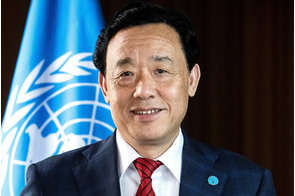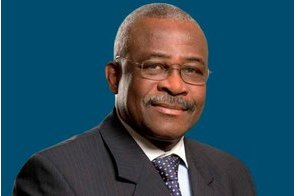AfDB presents Feed Africa Strategy to stakeholders in Central Africa

Summary
Feed Africa Strategy is designed to increase Africa’s access to adequate nutrition, end hunger, and reduce food imports.
The African Development Bank Group said today that it launched the Feed Africa Strategy in the Central Africa Region last Friday at a regional workshop held in Yaoundé, Cameroon. Stakeholders in the region came together to deliberate the major components of the Feed Africa strategy, the AfDB’s programme designed to increase Africa’s access to adequate nutrition, end hunger and poverty, and reduce food imports on the continent.
In his keynote address, Cameroon’s Minister of Agriculture and Rural Development, Henri Eyebe Ayissi, indicated his country’s commitment to work with AfDB to develop agricultural production value chains, modernize infrastructure and improve financing mechanisms. He spoke to over 150 participants from the public and private sectors, emphasizing the objective of making Cameroon food secure and a net food exporter by promoting agriculture as a business.
“Africa currently faces a staggering food import bill of US $35 billion per annum, which is projected to increase to US $110 billion by 2025 if we do nothing,” Chiji Ojukwu, AfDB’s Director of Agriculture and Agro-Industry, said in his presentation, stating that the bank intends to contribute $2.4 billion annually for the next 10 years, to bridge the financing gap. Ojukwu said about $30 billion is needed annually for Africa’s agricultural transformation. The bank hopes its contribution would catalyze investment from the private sector.
The bank’s Resident Representative, Racine Kane, said the Feed Africa Strategy was a cooperative effort by all stakeholders on the continent, and it will help to enhance the Comprehensive Africa Agriculture Development Programme (CAADP) and Maputo Declaration of the African Union. The Maputo Declaration called for the allocation of 10 percent of national budgets to agriculture development, among other decisions, while the CAADP was established to improve the prospects of smallholder farmers.
In his remarks, Acting Vice-President of the African Development Bank, Janvier Litse, reiterated the conviction of the President of the Bank, Akinwumi Adesina, which is that, “Agriculture must be the engine of Africa’s economic transformation.”
The AfDB has five key priority areas, also referred to as the High 5s. The Feed Africa strategy is one them and it has four goals, namely, to contribute to eliminating extreme poverty in Africa by 2025; end hunger and malnutrition in Africa by 2025; make Africa a net food exporter; and move Africa to the top of export‑orientated global value chains, where it has comparative advantage. The other High 5s are: Light up and Power Africa; Industrialize Africa; Integrate Africa; and Improve the Quality of Life for the People of Africa.
Related
-
How to create wealth through agriculture in Africa
While both the employed and the unemployed across Africa have been encouraged to engage in agriculture, the focus has been ...
-
UN calls for repurposing of $470 billion in global agricultural support
Global support to producers in the agricultural sector is projected to soar up more than three times to $1.759 trillion.
-
African countries need to stop importing food – IFAD president
African leaders ought to redirect the $35 billion used for food importation annually to develop their countries’ ...








